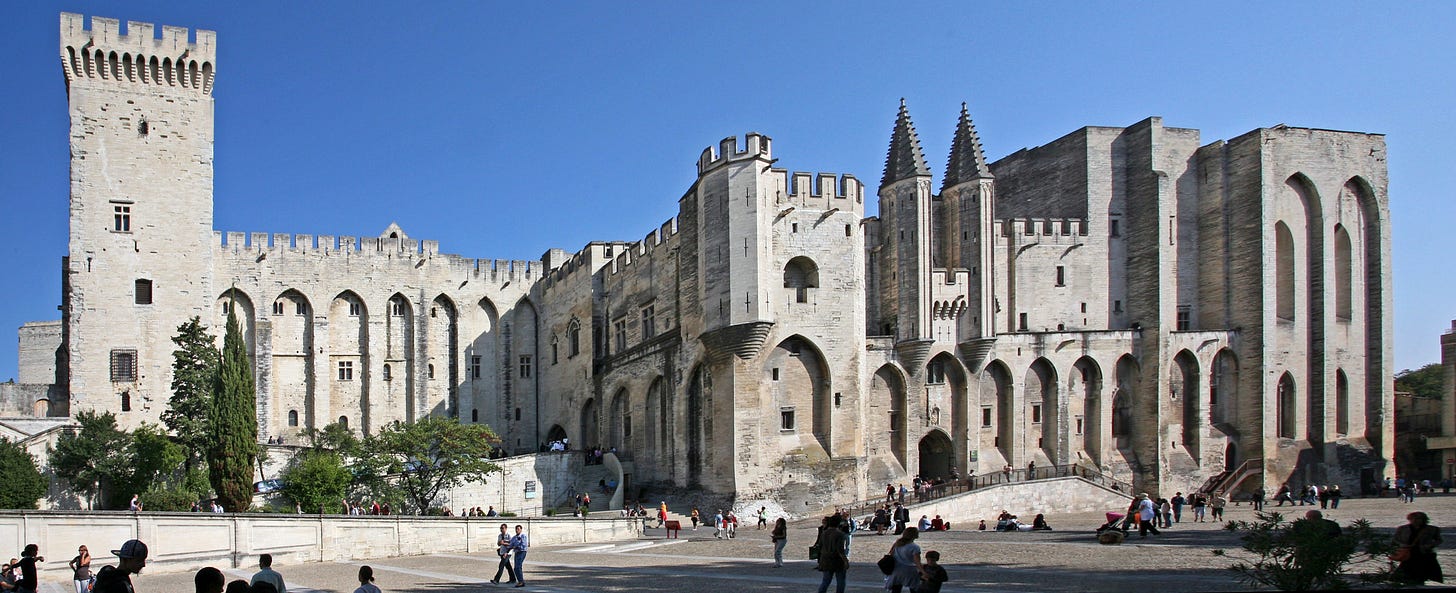A Tale of Popes, Antipopes, Bishops, and Kings
The Archbishop of Mainz, Adolf I von Nassau, was a particularly ambitious and difficult prelate of the late 14th century. Did the Avignon Papacy enable and encourage his discord?
A State of Disarray
The movement toward the Great Western Schism (1378 - 1417 AD) began with the movement of the papal residence from Rome to Avignon in 1309 AD under Pope Clement V—a Frenchman and staunch supporter of the French crown. Pope Clement V was also responsible for the destruction of the Order of the Knights Templar with the help of the French King, despite the previous support that the Vatican had for the knights. What is less known regarding the Avignon Papacy, is that the city of Avignon was not in the Kingdom of France at the time, but rather in the Kingdom of Arles, also known as the Arelat.
The Kingdom of Arles was the successor to the Kingdom of Burgundy and was transferred to the Holy Roman Empire (HRE) in 1032 AD during the reign of Emperor Conrad II.[1] However, the northwestern section of the former Kingdom of Burgundy continued as an independent duchy under the control of Capetian dukes—relatives of the French Kings. The Arelat remained in the HRE until the County of Provence was transferred to the Kingdom of France in the late 15th century. Thus, Avignon was a city of the HRE throughout the papal exile from 1309 – 1377 AD.

The Avignon Papacy caused many issues that are far too plenty to cover in this article, but chief among them was the ambiguous positioning of the pope at any one time. Was he an unbiased bishop seeking to fulfill the duties of his office to his utmost, or was he simply a political agent? These questions circulated throughout Western Europe, creating dissention and sowing the seeds of religious rebellion beginning with Wycliffe and ending with Jan Hus and Jerome of Prague.
The uncertainty of the pope’s intentions and his willingness to increasingly engage in worldly matters was unsettling at best, and misleading at worst. Furthermore, the city of Avignon had quite a tumultuous past as having once been the capital of the heretical Cathars and epicenter of the Albigensian Crusade (1209 – 1229 AD)—an interesting choice for a papal residence, though it had been an episcopal seat for centuries.
Avignon had also been endowed with a university just a few years prior to Clement V’s relocation from Rome, drawing to it numerous professors and scientists during the rise of Humanism following the appointment of Petrarch as the poet laureate of the HRE in 1341 AD. The backdrop of Avignon as having once been the seat of religious corruption during the early 13th century, the newly endowed and highly ambitious university, and the rise of divergent religious thought already plagued the city’s reputation.
Rome’s Rival?
Had the 14th century not be struck with the Black Death in 1349 AD, and then recurrently thereafter, perhaps the schism would have been avoided. However, the plague brought the second half of the 14th century to a standstill in nearly every regard; like putrid waters lacking an escape. Nevertheless, the popes in Avignon needed a worthy palace and set about redesigning the former episcopal palace into one of the grandest of its time.

The architectural wonder that is the Papal Palace of Avignon was designed by Matthias von Arras—a master architect who also laid out the plans for the Cathedral of St. Vitus in Prague among many others. Matthias worked with a larger network of architects, known as the Parler family, who were actively building cathedrals throughout Europe. They are largely held as some of the foremost masters of Gothic architecture, known for intricate window tracery and monumental, yet narrow arches.
However, the foreboding arches of the Papal Palace of Avignon did not just accentuate its architecture. Amidst the setting western sun, the palace’s shadow enveloped much of the HRE. Factions arose in the ensuing darkness between popes and anti-popes—and in a world of slow communication, it was at times difficult to differentiate between the two. The frailty of papal authority enabled secular forces to seize more power, thereby threatening to dismantle centuries of ecclesiastical checks and balances.
Keep reading with a 7-day free trial
Subscribe to Maintaining the Realm to keep reading this post and get 7 days of free access to the full post archives.




